For more than a year, we have been forced to stay grounded. Now, more than ever, the possibility of traveling again feels less elusive. Vaccinations are on the rise, and restrictions are slowly lifting. In other words, the hope of reclaiming travel is on the horizon. For those who wish to combine their love of wine with wanderlust, wine travel is the way to go. And while your mind may flash to vineyards in Napa or France, many unsung wine regions are also worth exploring.
From Pico Island to Traverse City, below are some lesser-known wine locations to consider for your next trip. For those not quite ready to travel, wine recommendations are also provided so that you may explore these regions using your "liquid passport." You don't have to get on a plane to learn the history, culture, and traditions of a place if you are open to listening to the tales in your glass.
Baja Wine Country
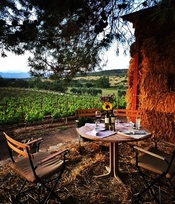
Yes, we are heading to Mexico for wine. The vast majority of Baja wineries are in Valle de Guadalupe, a mere 90-minute drive from the U.S. border. Mexico's Valle de Guadalupe has been referred to as the "Napa Valley of Mexico," and for good reason. Blessed with a perfect climate, a centuries-old winemaking tradition, and surrounded by two seas, this region can yield world-class wines. The area is experiencing a rebirth with renewed interest in its potential due to stunning vistas, designer hotels, and impeccable Mexican cuisine.
"Baja is truly a magical place,” says Tom Bracamontes, owner and Founder of La Competencia Imports LLC. “It is unlike any other wine region in the world. The wines are becoming world-class, the food is delicious, the craft beer is exploding, and the surrounding landscape is breathtakingly rustic. What makes it truly magical is ‘el secreto de Baja es la gente’ (the secret of Baja is the people).” Tom has become a major importer of Baja wines through his company, representing over 20 wineries and introducing these beautiful wines to the U.S. market.
Wines to Try:
--Adobe Guadalupe, Gabriel 2016, $60
--Bodegas Henri Lurton Sauvignon Blanc 2018, $27
Pico Island, Azores
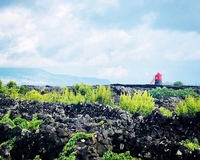
You may be familiar with wine regions in Portugal like the Douro and the Alentejo; however, wines from Pico Island may not yet be on your radar. Pico Island, one of nine volcanic Azorean islands in the Atlantic Ocean, is a short flight from mainland Portugal and produces wines well worth discovering. It may not be the first place you would expect to find a thriving wine culture; however, the destination has been producing wine since the 15th century. Protected by UNESCO World Heritage since 2004, Pico's vineyards are planted on volcanic soils and surrounded by dry-stone walls made of black basalt stones. White wines are made primarily from Arinto grapes, along with Verdelho and Terrantez do Pico grapes, whereas red wines are made from Merlot, Syrah, and hybrids. Wine enthusiasts who are searching for a new experience should try these magnificent wines of the Azores.
"The Azores is all about extreme terroir, nestled in the North Atlantic, the tiny archipelago (part of Portugal) in the island of Piço. The vineyards sit on the coast on volcanic soils, and with high sea current, they get a bit flooded; therefore, you get salinity on the wines. If you want to explore volcanic wines and connect extreme nature, you must visit the Azores. We love the work Antonio Maçanita with his project Azores Wine Company is doing to conserve the islands' identity and make low intervention terroir-driven wines. Try his Arinto, Verdelho and Rosé Vulcanico! Eat plenty of fresh seafood, wholesome seafood casseroles, and sardines," says, Pedro Rodriguez and Julio Robledo, co-owners of Grand Cata, a brilliant wine store in Washington, D.C. that specializes in Latin American producers.
Wines to Try:
--Azores Wine Company, Rosé Vulcânico, 2019, $20
--Azores Wine Company, Terrantez do Pico, 2019, $58
Uruguay
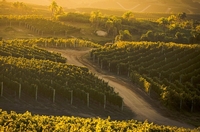
Argentina and Chile are probably the places you think of when discussing South American wines; however, neighboring Uruguay should not be ignored. Uruguay has a 150-year-long history of winemaking, but it's always struggled to get the kind of attention that its neighbors have received. Granted, it's much smaller than its neighbors but by no means less significant. Vines come planted across more than 20,000 acres, many of which benefit from their proximity to the Atlantic Ocean, and virtually all of Uruguay's wineries are small, family-run businesses.
"Uruguay is a hidden gem in the Atlantic Coast in South America,” says Pedro Rodriguez and Julio Robledo, of Grand Cata, “a must-visit to disconnect and explore the wines outside of Montevideo's capital city. We highly recommend visiting Bodega Garzón and Bodega Bouza. Both have a focus as many of the Uruguayan producers in their signature variety Tannat. For full-body wine lovers, you have to explore the expressions of Tannat. Also, explore the whites - Albariño is the shining white variety in Uruguay! Make sure you also enjoy the sparkling wine for Garzón and the Riesling made by Bouza. Indulge in grass-fed beef "a la parrilla," the chivito sandwich and many of the fresh seafood Uruguay has to offer."
Photo: Courtesy of Bodega Garzón
Wines to Try:
--Bodega Garzón, Albarino Reserva 2019, $17
--Bodega Bouza, Tannat Reserva 2018, $30
Hungary
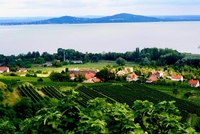
Like much of Europe, Hungary has a long history of wine production dating back to Roman times. More than 100 vineyards in Hungary are spread across twenty-two wine regions with different microclimates producing different styles and tastes. While Tokaji ranks among the world's greatest wines, there are so many other styles to explore, from crisp, dry whites like Furmint and Hárslevelű to rich and spicy reds like Blaufränkisch. Hungary is a stunning country with hidden gems of vineyards and wineries just waiting to be explored.
"By taking this step into the unknown, wine travelers will be rewarded with really personal experiences at wineries,” says Carolyn Banfalvi, co-founder of Taste Hungary, an online Hungarian wine shop, and curator of Hungarian food, wine, and cultural experiences. “None of the mass tourism exists here found in the more familiar wine regions of the world. The majority of wineries here are small-scale family-run operations. A typical winery experience in Hungary is having a family member give you a personal tour and tasting through their portfolio, sharing their passion while explaining the lore of the wine region—maybe even over some homemade food (if you are lucky). For me, there's no better way to experience a country's wine than through the lens of the people who make it."
Photo: Courtesy of Taste Hungary
Wines to Try:
--Vida, Bonsai Kadarka, 2017, $22
--Kolonics Winery, Somló Gyur Vineyard Gyur Vineyard "Nimród" 2018, $25
Traverse City, Michigan
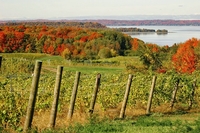
This little-known region may be America's next great wine destination. Michigan currently ranks sixth in the U.S. in wine grape production. It is home to five American Viticultural Areas (AVAs), two of which have received significant acclaim: the Leelanau and Old Mission Peninsulas. These wine regions around Traverse City are perfect for Riesling, Pinot Grigio, Cabernet Franc, and Gewurztraminer as they thrive in Michigan's cooler climate that is moderated by "lake effect." There has also been a boom in sparkling wine production in the area. With so many of the wineries near beautiful sandy beaches, lighthouses, and striking sand dunes, it's no surprise that the region is earning the nickname the "Napa of the Midwest."
To better understand the region's depth and breadth, I reached out to Brent Kroll, Michigan native, proprietor, and sommelier of one of D.C.'s most beloved wine bars, Maxwell Park. Kroll noted that he's "been following the incredible work of Sean O'Keefe since he was at Chateau Grand Traverse and now Mari Vineyards." Kroll also highlighted wines from Peninsula Cellars and the Cabernet Franc from Black Star Farms as "must-tries."
Photo: Credit Wandering Educators
Wines to Try:
--Peninsula Cellars, 2018 Dry Riesling, $20
--Black Star Farms, 2017 Arcturos Cabernet Franc, $25